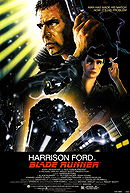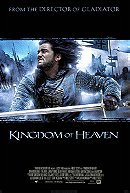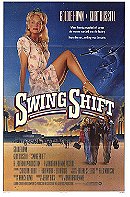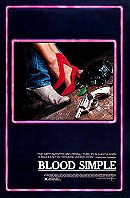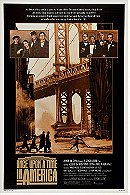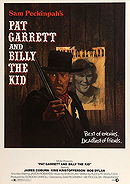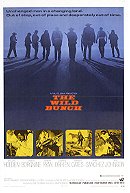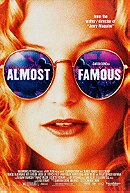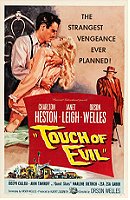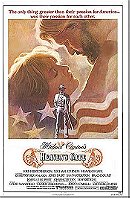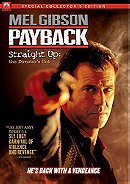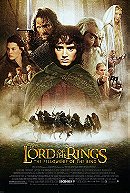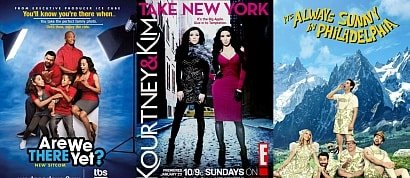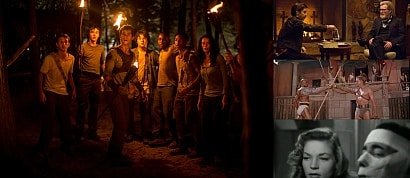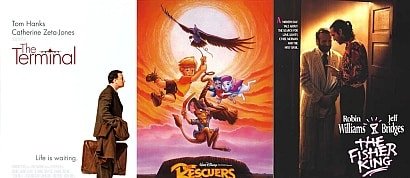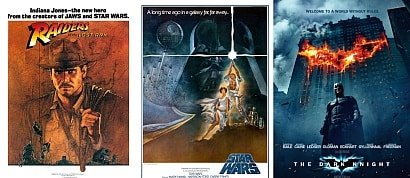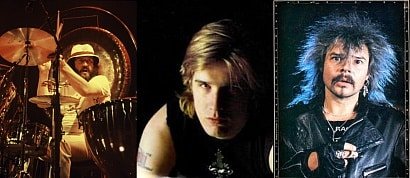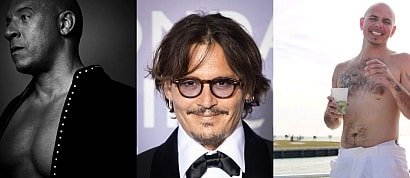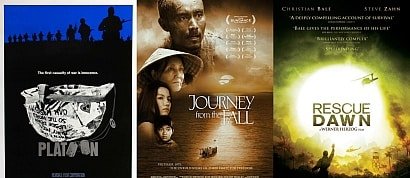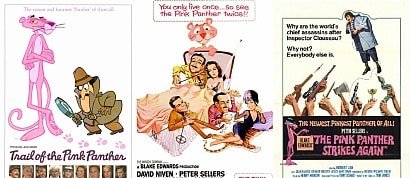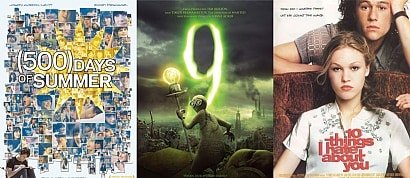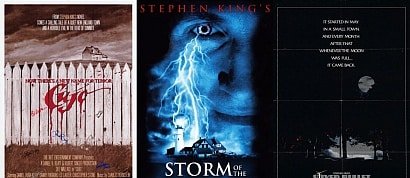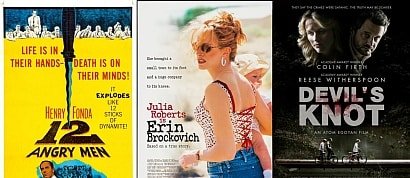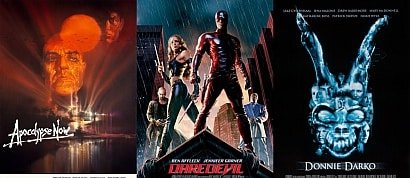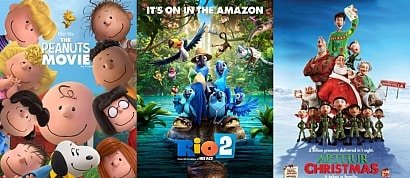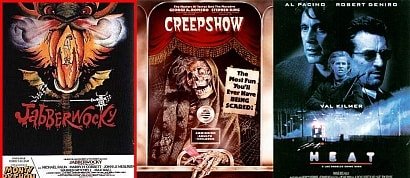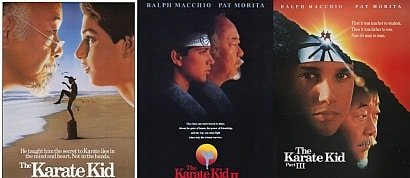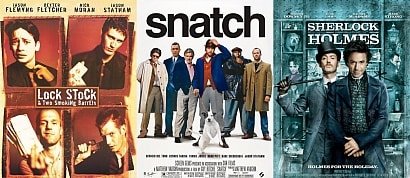The kindest cut: Movies improved by directors’ cut
Sort by:
Showing 14 items
Decade:
Rating:
List Type:
Apocalypse Now (1979)
It’s hard to say Apocalypse Now Redux is “better” than Apocalypse Now, since the original is a revered film classic, and the 2001 re-release inserts 49 minutes of footage that mostly make an already episodic film even more episodic.
But the film has always been about a stage-by-stage journey to the primordial heart of humanity’s worst impulses. (It’s based, after all, on Heart Of Darkness.) By reinstating much of the cut footage—particularly a long, lazy sequence set on a French plantation—director Francis Ford Coppola and editor Walter Murch make that journey even more explicit, as the crew of the ship at the story’s center is taken further into the symbolic past, with more and more layers of civilization being stripped away with every encounter.
That episodic nature suggests that Apocalypse Now could even be as long as Coppola’s earliest cuts (reportedly in the five-hour range) and still be as hallucinatory and mesmerizing as it ever was.
But the film has always been about a stage-by-stage journey to the primordial heart of humanity’s worst impulses. (It’s based, after all, on Heart Of Darkness.) By reinstating much of the cut footage—particularly a long, lazy sequence set on a French plantation—director Francis Ford Coppola and editor Walter Murch make that journey even more explicit, as the crew of the ship at the story’s center is taken further into the symbolic past, with more and more layers of civilization being stripped away with every encounter.
That episodic nature suggests that Apocalypse Now could even be as long as Coppola’s earliest cuts (reportedly in the five-hour range) and still be as hallucinatory and mesmerizing as it ever was.
Agent Kermit D. Fonz's rating:


Blade Runner (1982)
There have been so many versions of Ridley Scott’s Blade Runner by this point—including three versions labeled as directors’ cuts—that it takes a little poking around to get to the meat of the matter. An original work print from 1982 was shown in theaters in the early ’90s as a director’s cut without Scott’s approval; he disowned it, complaining that it was poorly edited and didn’t feature the Vangelis soundtrack commissioned for the film. But the release drummed up enough late-breaking interest in a film previously seen as a flop that Warner Bros. authorized the budget for an official director’s cut, one without the theatrical version’s studio-enforced voiceover explaining the plot beat by beat, and without the studio-mandated happy ending.
Scott’s official 1992 director’s cut wasn’t the final word, though; he felt he still hadn’t had enough time to make the changes he wanted, and the early DVD suffered from low transfer quality. So Scott went back to the studio in 2000 for one more shot at turning Blade Runner into the film he originally wanted.
The latest version, billed as his “Final Cut,” includes an extensive list of tiny technical fixes, from changed lines to “digital stabilization” of the wobbly horn on the unicorn seen in a dream sequence at the end. But it also went through a visual and audio remastering process, and the final result is a cleaner, less visually muddy, more consistent version. Some fans still object to the ending tweaks making it much clearer that protagonist Rick Deckard is an artificial life form, like the renegade replicants he’s been hunting down. While the new ending implies his nature rather than definitively stating it, it still irked longtime fans who enjoyed arguing the point more than hearing the director’s answer.
But that issue aside, the Final Cut version of Blade Runner is in most ways subtler and moodier than the theatrical cut, with less droning explication of Deckard’s world, and more time to marinate in it.
It’s a rare case where post-release CGI tinkering with the visuals improved them rather than suggesting a director who couldn’t stop second-guessing his own past decisions.
Scott’s official 1992 director’s cut wasn’t the final word, though; he felt he still hadn’t had enough time to make the changes he wanted, and the early DVD suffered from low transfer quality. So Scott went back to the studio in 2000 for one more shot at turning Blade Runner into the film he originally wanted.
The latest version, billed as his “Final Cut,” includes an extensive list of tiny technical fixes, from changed lines to “digital stabilization” of the wobbly horn on the unicorn seen in a dream sequence at the end. But it also went through a visual and audio remastering process, and the final result is a cleaner, less visually muddy, more consistent version. Some fans still object to the ending tweaks making it much clearer that protagonist Rick Deckard is an artificial life form, like the renegade replicants he’s been hunting down. While the new ending implies his nature rather than definitively stating it, it still irked longtime fans who enjoyed arguing the point more than hearing the director’s answer.
But that issue aside, the Final Cut version of Blade Runner is in most ways subtler and moodier than the theatrical cut, with less droning explication of Deckard’s world, and more time to marinate in it.
It’s a rare case where post-release CGI tinkering with the visuals improved them rather than suggesting a director who couldn’t stop second-guessing his own past decisions.
Agent Kermit D. Fonz's rating:


Kingdom of Heaven (2005)
What is it about Ridley Scott films that seems to lead to lackluster theatrical cuts that later lead to solid—or even great—directors’ cuts? Blade Runner is the most famous example, but Scott’s 2005 historical epic Kingdom Of Heaven was also greatly improved by a new cut released on DVD.
At 20th Century Fox’s behest, the theatrical version ran just under two and a half hours and attempted to tell a truncated, action-packed tale of the siege of Jerusalem during the Crusades, but the characters’ motivations were often inexplicable, and the character played by Orlando Bloom made little to no sense, abruptly displaying keen military strategy for no apparent reason. The director’s cut reinstates around 45 minutes of footage, restoring whole characters, clarifying relationships between characters, and clearing up Bloom’s backstory.
It also gives the period the appropriately epic sweep it needs, rather than attempting to turn what’s fundamentally a war film into something closer to an action picture. It still isn’t a truly great movie, but it’s much clearer what Scott and screenwriter William Monahan were going for, and it’s a much more enjoyable watch.
At 20th Century Fox’s behest, the theatrical version ran just under two and a half hours and attempted to tell a truncated, action-packed tale of the siege of Jerusalem during the Crusades, but the characters’ motivations were often inexplicable, and the character played by Orlando Bloom made little to no sense, abruptly displaying keen military strategy for no apparent reason. The director’s cut reinstates around 45 minutes of footage, restoring whole characters, clarifying relationships between characters, and clearing up Bloom’s backstory.
It also gives the period the appropriately epic sweep it needs, rather than attempting to turn what’s fundamentally a war film into something closer to an action picture. It still isn’t a truly great movie, but it’s much clearer what Scott and screenwriter William Monahan were going for, and it’s a much more enjoyable watch.
Agent Kermit D. Fonz's rating:


Swing Shift (1984)
Jonathan Demme’s dramedy about women working in a factory during World War II is one of the most famous cases in recent Hollywood memory of a film’s director and star clashing over the direction a film should take. Demme wanted to make an explicitly political film about how women were pressed into the workforce during the war, then asked to step back once it was over; Goldie Hawn disliked, among other things, how the film made her part of an ensemble and had her character sleeping with one man while involved in a relationship with another. Hawn had her way, and the studio sponsored reshoots, which Demme didn’t supervise.
In the ’90s, Sight And Sound’s Michael Vineberg got a look at Demme’s original cut and proclaimed it one of the best American films of the ’80s.
Is it? The director’s cut remains unavailable—though bootlegs have circulated for years—so it’s hard for laymen to know, but given the praise of Vineberg and others, and the roll Demme was on in the ’80s, it seems likely the original cut could have been something special. Here’s hoping Criterion eventually clears up which list this film belongs on.
In the ’90s, Sight And Sound’s Michael Vineberg got a look at Demme’s original cut and proclaimed it one of the best American films of the ’80s.
Is it? The director’s cut remains unavailable—though bootlegs have circulated for years—so it’s hard for laymen to know, but given the praise of Vineberg and others, and the roll Demme was on in the ’80s, it seems likely the original cut could have been something special. Here’s hoping Criterion eventually clears up which list this film belongs on.
Agent Kermit D. Fonz's rating:


Blood Simple (1984)
The Coen brothers’ first feature was re-released in 2000 as that rarity, a director’s cut shorter than the version originally released to theaters. (In interviews, the Coens said that nothing made by people still in their 20s has any business being made longer.)
Even so, they apparently felt they couldn’t indulge themselves in revisiting their baby without making fun of the idea of directors’ cuts; both the re-release and the DVD came with a mock introduction delivered by a pompous faux film historian.
The 96-minute version is tighter and moves a little faster than the 99-minute original, and features at least one clear improvement: M. Emmet Walsh no longer hisses “You are disgusting!” to the departing back of the man he means to swindle and murder, which makes his later actions much more of a surprise.
Even so, they apparently felt they couldn’t indulge themselves in revisiting their baby without making fun of the idea of directors’ cuts; both the re-release and the DVD came with a mock introduction delivered by a pompous faux film historian.
The 96-minute version is tighter and moves a little faster than the 99-minute original, and features at least one clear improvement: M. Emmet Walsh no longer hisses “You are disgusting!” to the departing back of the man he means to swindle and murder, which makes his later actions much more of a surprise.
Agent Kermit D. Fonz's rating:


Sergio Leone’s gangster epic premièred at the Cannes Film Festival in a cut that ran almost four and a half hours, before Leone cut 40 minutes for the European theatrical release.
But in America, the setting and subject of the director’s violent love poem, the film was cut down to 139 minutes, in a version that eliminated the complicated time scheme and ran the action in straight chronological order. This resulted in a movie that was far more incoherent and difficult to follow than Leone’s version, which cuts back and forth between three different time periods. The domestic theatrical release in 1984 was a disaster, but the director’s cut played later that year at the New York Film Festival, then got some play at a few theaters and was released on video.
By 1985, Showtime ran both versions, so TV viewers could make their own judgments. Leone, who died in 1989, never made another movie, but this story still isn’t over; a team that includes Leone’s children and Martin Scorsese’s Film Foundation is currently trying to recreate the four-and-a-half-hour version, and recently showed the fruit of their labors at 2012’s Cannes Film Festival.
If they succeed, they may be able to announce the ultimate director’s cut of the film; right now, they’re about 24 minutes short.
But in America, the setting and subject of the director’s violent love poem, the film was cut down to 139 minutes, in a version that eliminated the complicated time scheme and ran the action in straight chronological order. This resulted in a movie that was far more incoherent and difficult to follow than Leone’s version, which cuts back and forth between three different time periods. The domestic theatrical release in 1984 was a disaster, but the director’s cut played later that year at the New York Film Festival, then got some play at a few theaters and was released on video.
By 1985, Showtime ran both versions, so TV viewers could make their own judgments. Leone, who died in 1989, never made another movie, but this story still isn’t over; a team that includes Leone’s children and Martin Scorsese’s Film Foundation is currently trying to recreate the four-and-a-half-hour version, and recently showed the fruit of their labors at 2012’s Cannes Film Festival.
If they succeed, they may be able to announce the ultimate director’s cut of the film; right now, they’re about 24 minutes short.
Agent Kermit D. Fonz's rating:


A maverick director who died at age 59 and still managed to outlive his career by a few years, Sam Peckinpah is the unofficial king of the posthumous director’s cut. Pat Garrett, his last period Western, was an ambitious work meant to serve as an epitaph for his favorite genre and period in American history, and also, perhaps, for the ’60s counterculture that helped briefly make him commercially fashionable.
During shooting, Peckinpah so antagonized MGM studio chief James Aubrey that he was happy to take the film away from Peckinpah after the director struggled with the editing; MGM released it in a truncated version that emphasized the sexy, violent elements at the expense of pace, character shading, and anything like a coherent storyline.
In fall 1988, Turner Entertainment, working from Peckinpah’s notes, was able to assemble a version that was longer by some 15 minutes and truer to the director’s elegiac intentions. Crucially, it reinstated Peckinpah’s framing device, which renders most of the action as a flashback Pat Garrett (James Coburn) experiences in the last moments of his life.
It also put back a scene, featuring Barry Sullivan as Chisum, that was cut from Aubrey’s theatrical release, but put back when the film was shown on TV to make up for the fact that editing the movie for broadcast standards made it too short.
And it removed “Knockin’ On Heaven’s Door,” written as part of the original score by Bob Dylan, from Slim Pickens’ death scene; Peckinpah and his usual composer, Jerry Fielding, decided it would be too on-the-nose. The legendary Los Angeles cable station Z Channel, which became famous in the ’80s for including directors’ cuts of controversial films as part of its adventurous programming, showed Peckinpah’s “director’s cut” four years after his death in 1984, and just months before the channel itself went off the air.
During shooting, Peckinpah so antagonized MGM studio chief James Aubrey that he was happy to take the film away from Peckinpah after the director struggled with the editing; MGM released it in a truncated version that emphasized the sexy, violent elements at the expense of pace, character shading, and anything like a coherent storyline.
In fall 1988, Turner Entertainment, working from Peckinpah’s notes, was able to assemble a version that was longer by some 15 minutes and truer to the director’s elegiac intentions. Crucially, it reinstated Peckinpah’s framing device, which renders most of the action as a flashback Pat Garrett (James Coburn) experiences in the last moments of his life.
It also put back a scene, featuring Barry Sullivan as Chisum, that was cut from Aubrey’s theatrical release, but put back when the film was shown on TV to make up for the fact that editing the movie for broadcast standards made it too short.
And it removed “Knockin’ On Heaven’s Door,” written as part of the original score by Bob Dylan, from Slim Pickens’ death scene; Peckinpah and his usual composer, Jerry Fielding, decided it would be too on-the-nose. The legendary Los Angeles cable station Z Channel, which became famous in the ’80s for including directors’ cuts of controversial films as part of its adventurous programming, showed Peckinpah’s “director’s cut” four years after his death in 1984, and just months before the channel itself went off the air.
The Wild Bunch (1969)
The success of the recut Pat Garrett And Billy The Kid helped create a demand for more “real Peckinpah” versions of Peckinpah movies, which helped get the preferred version of the director’s masterpiece back into circulation.
“The Original Director’s Cut” of The Wild Bunch released to theaters in 1995 includes 10 minutes of footage cut by the studio between the time Peckinpah signed off on it and the film’s general release. Notably, it adds a flashback showing William Holden and Robert Ryan together in a bordello, before the law captures Ryan and turned him into his old friend’s Judas goat.
It also uses children’s reaction shots to contextualize the horror of the movie’s violence. None of the additions made the movie any more violent, but the MPAA ratings board slapped an NC-17 on it. (A different board gave the same movie an “R” rating back in 1969.) Quentin Tarantino must have eaten his heart out a little over that.
“The Original Director’s Cut” of The Wild Bunch released to theaters in 1995 includes 10 minutes of footage cut by the studio between the time Peckinpah signed off on it and the film’s general release. Notably, it adds a flashback showing William Holden and Robert Ryan together in a bordello, before the law captures Ryan and turned him into his old friend’s Judas goat.
It also uses children’s reaction shots to contextualize the horror of the movie’s violence. None of the additions made the movie any more violent, but the MPAA ratings board slapped an NC-17 on it. (A different board gave the same movie an “R” rating back in 1969.) Quentin Tarantino must have eaten his heart out a little over that.
Agent Kermit D. Fonz's rating:


Almost Famous (2000)
Writer-director Cameron Crowe told his own story in Almost Famous: the story of a Southern California teenager who conned his way into writing about rock ’n’ roll for Rolling Stone magazine.
The theatrical cut of the film came in at just over two hours, which was barely enough time to cover how the Crowe-like protagonist (played by Patrick Fugit) went from fannishly interviewing legendary rock critic Lester Bangs to getting in way over his head while on tour with a up-and-coming band.
The DVD cut adds 40 minutes, much of it in the form of short conversations and anecdotal fragments depicting life on the road. But those small additions make a huge difference, fleshing out the hero’s unrequited attraction to super-groupie Penny Lane (played by Kate Hudson), and showing more clearly how his evolving relationships with the people he was supposed to be covering wound up compromising his objectivity.
All of this is present in the original as well, but in a more schematic way. In the “Untitled” version of Almost Famous, Crowe allows the viewers to live with these people long enough to understand the impossible choices they have to make.
The theatrical cut of the film came in at just over two hours, which was barely enough time to cover how the Crowe-like protagonist (played by Patrick Fugit) went from fannishly interviewing legendary rock critic Lester Bangs to getting in way over his head while on tour with a up-and-coming band.
The DVD cut adds 40 minutes, much of it in the form of short conversations and anecdotal fragments depicting life on the road. But those small additions make a huge difference, fleshing out the hero’s unrequited attraction to super-groupie Penny Lane (played by Kate Hudson), and showing more clearly how his evolving relationships with the people he was supposed to be covering wound up compromising his objectivity.
All of this is present in the original as well, but in a more schematic way. In the “Untitled” version of Almost Famous, Crowe allows the viewers to live with these people long enough to understand the impossible choices they have to make.
Agent Kermit D. Fonz's rating:


Dawn of the Dead (2004)
In terms of substantial plot elements, the unrated director’s cut of Zack Snyder’s remake/reimagining of Dawn Of The Dead adds just one small scene—a pleasant but disposable character moment for a secondary character—and an extended take on the main group breaking in to the mall.
That’s not what makes it the definitive version of the film. That distinction goes to the gore that was sprinkled throughout the film after the fact, necessitating an “unrated” label. This Dawn, like its zombies, relies on relentless forward motion and a visceral sense of danger for its effectiveness, and the longer, bloodier, lingering shots on the results of the zombie apocalypse definitely help get that across.
After seeing the director’s cut, the original theatrical release seems slightly antiseptic and bloodless, which probably explains why the only version available on DVD is the director’s cut. It’s amazing how much difference a little gore can make.
That’s not what makes it the definitive version of the film. That distinction goes to the gore that was sprinkled throughout the film after the fact, necessitating an “unrated” label. This Dawn, like its zombies, relies on relentless forward motion and a visceral sense of danger for its effectiveness, and the longer, bloodier, lingering shots on the results of the zombie apocalypse definitely help get that across.
After seeing the director’s cut, the original theatrical release seems slightly antiseptic and bloodless, which probably explains why the only version available on DVD is the director’s cut. It’s amazing how much difference a little gore can make.
Agent Kermit D. Fonz's rating:


Touch of Evil (1958)
Following nearly a decade of exile in Europe, Orson Welles intended to make his Hollywood comeback with 1958’s Touch Of Evil. But like so many other things in his brilliant but muddled career, it didn’t pan out that way.
Welles’ rough cut was manhandled by Universal, which recut and reshot certain scenes with the help of journeyman director-editor Harry Keller.
Incensed, Welles fired off an insanely detailed (but cordial) 58-page memo detailing dozens of suggested changes. Universal ignored most of Welles’ wishes, and the studio’s 93-minute version of Touch Of Evil was considered definitive for decades. (A 108-minute version released in the mid-’70s contained some, but not all, of Welles’ changes.) The film wasn’t fully re-edited based on Welles’ original memo until 1998.
Most notably, the 1998 version ditches the opening credits and Henry Mancini’s great but distracting score from the film’s famed opening sequence. Other changes—from restored lines of dialogue to the reshuffling of certain shots—are less noticeable, but equally crucial. About the only thing not addressed in Touch Of Evil’s belated director’s cut is the curious decision to cast Charlton Heston as a Mexican.
Welles’ rough cut was manhandled by Universal, which recut and reshot certain scenes with the help of journeyman director-editor Harry Keller.
Incensed, Welles fired off an insanely detailed (but cordial) 58-page memo detailing dozens of suggested changes. Universal ignored most of Welles’ wishes, and the studio’s 93-minute version of Touch Of Evil was considered definitive for decades. (A 108-minute version released in the mid-’70s contained some, but not all, of Welles’ changes.) The film wasn’t fully re-edited based on Welles’ original memo until 1998.
Most notably, the 1998 version ditches the opening credits and Henry Mancini’s great but distracting score from the film’s famed opening sequence. Other changes—from restored lines of dialogue to the reshuffling of certain shots—are less noticeable, but equally crucial. About the only thing not addressed in Touch Of Evil’s belated director’s cut is the curious decision to cast Charlton Heston as a Mexican.
Heaven's Gate (1980)
When a 219-minute version of Michael Cimino’s Heaven’s Gate was released to vitriolic reviews and terrible buzz, United Artists pulled the film from public viewing and had it re-edited down to 149 minutes.
The radically shortened version didn’t fare much better with critics or audiences, but the film’s reputation began to change for the positive when Z Channel began airing a 219-minute director’s cut that restores the film to its original grandeur and ambition.
Most importantly, the longer version restores a stunning opening setpiece of protagonist Kris Kristofferson and drunken buddy John Hurt graduating from Harvard, establishing the giddy heights from which Kristofferson falls into the depths of Western hell. In its 219-minute version, Heaven’s Gate is a true epic, overreaching and self-indulgent, but littered with moments of absolute beauty.
The radically shortened version didn’t fare much better with critics or audiences, but the film’s reputation began to change for the positive when Z Channel began airing a 219-minute director’s cut that restores the film to its original grandeur and ambition.
Most importantly, the longer version restores a stunning opening setpiece of protagonist Kris Kristofferson and drunken buddy John Hurt graduating from Harvard, establishing the giddy heights from which Kristofferson falls into the depths of Western hell. In its 219-minute version, Heaven’s Gate is a true epic, overreaching and self-indulgent, but littered with moments of absolute beauty.
Agent Kermit D. Fonz's rating:


Payback: Straight Up (2007)
Really, no version of Payback needs to exist. Like John Boorman’s vastly superior 1967 Lee Marvin vehicle Point Blank, Payback is an adaptation of Richard Stark’s pulpy crime novel The Hunter.
Trading Lee Marvin’s grizzled badass persona for Mel Gibson’s schlubby smirking was already a fool’s gambit, but the theatrical version of the film bunged things up by overcrowding the wonderfully simple man-on-a-mission plotting of Stark’s novel (and Boorman’s film) with cartoony mobster figures. For his home-video director’s cut, Brian Helgeland pared things down.
Gibson’s betrayal is seen through inserted flashbacks, a silly kidnapping subplot is axed, and Kris Kristofferson’s mob chief is removed entirely. Most importantly, Gibson’s character is made less goofy and sympathetic. It’s still no Point Blank, but Payback: Straight Up is a marked improvement on the unrulier original.
Trading Lee Marvin’s grizzled badass persona for Mel Gibson’s schlubby smirking was already a fool’s gambit, but the theatrical version of the film bunged things up by overcrowding the wonderfully simple man-on-a-mission plotting of Stark’s novel (and Boorman’s film) with cartoony mobster figures. For his home-video director’s cut, Brian Helgeland pared things down.
Gibson’s betrayal is seen through inserted flashbacks, a silly kidnapping subplot is axed, and Kris Kristofferson’s mob chief is removed entirely. Most importantly, Gibson’s character is made less goofy and sympathetic. It’s still no Point Blank, but Payback: Straight Up is a marked improvement on the unrulier original.
When it came to fully adapting J.R.R. Tolkien’s sprawling Lord Of The Rings books, sheer practicality got in Peter Jackson’s way; studios and theaters alike want to limit the length of theatrical releases, for financial reasons.
All told, two hours of additional footage was cut from the trilogy for theatrical release, but restored in the DVD releases’ extended cuts, adding plenty of scenes that weren’t absolutely essential to the plot, but gave more texture to Tolkien’s universe.
Whether it’s the four hobbits singing and drinking at the Green Dragon in Fellowship Of The Ring, Faramir’s flashback detailing his relationship with his father in The Two Towers, or Saruman’s death in Return Of The King, the restored scenes helped flesh out Tolkien’s vision and provide a richer world, and more time spent exploring it.
All told, two hours of additional footage was cut from the trilogy for theatrical release, but restored in the DVD releases’ extended cuts, adding plenty of scenes that weren’t absolutely essential to the plot, but gave more texture to Tolkien’s universe.
Whether it’s the four hobbits singing and drinking at the Green Dragon in Fellowship Of The Ring, Faramir’s flashback detailing his relationship with his father in The Two Towers, or Saruman’s death in Return Of The King, the restored scenes helped flesh out Tolkien’s vision and provide a richer world, and more time spent exploring it.
Agent Kermit D. Fonz's rating:


Added to
9 votes
My favorite lists
(33 lists)list by Agent Kermit D. Fonz
Published 12 years, 4 months ago  4 comments
4 comments
 4 comments
4 commentsPeople who voted for this also voted for
First Viewed Television Shows: 2011
Watched in 2014 (December)
Ranking the Best Picture Winners: 1950s
TGWTG.com Forums Movie Draft 3 Picks
Directors' Best Films
Looney Tunes & Merrie Melody 1970-Present
Drummers
Top 50 Favorite Movies of the '90s
my top 10 album covers
TGWTG Male Celebrity Crush Draft Picks
Films watched and studied for university
Pink Panther Movies
My Movie Collection :D
Stephen King Movies
Lawyers, Jury, Trials
More lists from Agent Kermit D. Fonz
Unkindest cut: Movies weakened by directors’ cut
Favorite films and The Decades
CGI Animated Films: The best and worst of
TGWTG Movie Draft 3: This Time It's Personal
The Karate Kid Series: The best and worst of
Guy Ritchie: The best and worst of
This Concludes Our Broadcast: 2011-2012
 Login
Login
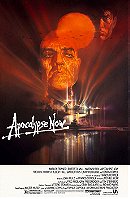
 3932
3932
 8.2
8.2
 8.4
8.4
